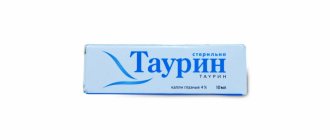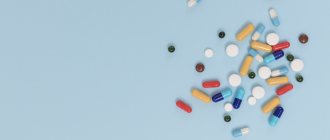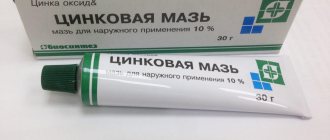Sulfonamide drugs (sulfonamides) are a large group of synthetic drugs - derivatives of sulfanilic acid amide that have an antibacterial effect.
Sulfonamides are the very first of all groups of synthetic drugs that were used to treat bacterial infections.
Sulfonamides have a narrow spectrum of action, that is, they affect a small number of pathogens of bacterial infectious diseases, and are also quite toxic. With the availability of more effective and safer antibacterial drugs (broad-spectrum antibiotics, fluoroquinolones), this significantly limits the use of sulfonamides in modern clinical practice.
Chemical properties
antibiotic of a number of sulfonamides, it is also called streptocide . It is one of the first representatives of this series of antibacterial agents. Has a wide spectrum of antimicrobial activity.
The medicine is synthesized in the form of a white crystalline powder, without a specific odor, bitter taste, the aftertaste of the powder is sweet. The substance dissolves well in boiling water, difficultly - in ethyl alcohol, soluble - in hydrochloric solution , caustic alkali , glycerin , acetone , propylene glycol . The product is insoluble in chloroform , ether , benzene , petroleum ether . The molecular weight of the compound is 172.2 grams per mole.
The antibiotic is also sold as sodium sulfonamide . It is a white powder, highly soluble in water. Practically insoluble in various organic solvents. Also available in tablet form.
Sulfanilamide preparations are mainly used externally, in the form of ointments, powders for external use, liniment, aerosols, and as part of vaginal suppositories. However, the medicine can also be taken orally.
NEWS LIBRARY LINKS ABOUT THE SITEa) Sulfonamide drugs
Sulfonamide drugs (sulfonamides) can be considered derivatives of sulfanilic acid.
All modern sulfonamide drugs are similar to each other in the spectrum and mechanism of antimicrobial action. Streptococci, staphylococci, pneumococci, gonococci, meningococci, intestinal, dysentery, diphtheria and anthrax bacilli, as well as cholera vibrios, brucella and chlamydia (pathogens of trachoma, etc.) are very sensitive to them.
Sulfonamides have a bacteriostatic effect on microorganisms. The mechanism of the bacteriostatic effect of sulfonamides is that these substances, having a structural similarity to para-aminobenzoic acid (PABA), turn out to be its competitive antagonists. PABA is necessary for microorganisms to synthesize folic acid, which is converted into folinic acid, which is involved in the synthesis of nucleic acids. The synthesis of nucleic acids, as is known, is the main factor ensuring the development and reproduction of any cells, including microorganisms. By replacing PABA in the process of folic acid synthesis, sulfonamides disrupt the formation of this acid and thus prevent the formation of nucleic acids, which is accompanied by a delay in the development and reproduction of microorganisms (Fig. 30).
Rice. 30. Scheme of the participation of para-aminobenzoic acid in the synthesis of nucleic acids and the direction of action of sulfonamides, trimethoprim and biseptol
Folic acid is also necessary for the development of human body cells. However, unlike microorganisms, human cells themselves do not synthesize folic acid, but absorb it from the blood, into which this acid is absorbed from the intestines. This explains the fact that human cells are practically insensitive to the action of sulfonamides, unlike microorganisms.
The peculiarities of the mechanism of action of sulfonamides also explain the fact that in environments with a high content of PABA (blood, pus), the antibacterial activity of sulfonamides is noticeably reduced. A similar phenomenon is observed in the case of the use of sulfonamides together with medicinal substances, during the breakdown of which PABA is released in the body (for example, with novocaine). The effect of sulfonamides is also weakened when combined with folic acid or with substances involved in its synthesis (for example, methionine).
Having the same spectrum and mechanism of antibacterial action, sulfonamide drugs differ from each other only in their unequal absorption from the gastrointestinal tract. On this basis, all sulfonamides can be divided into two groups: 1) well absorbed from the gastrointestinal tract
;
2) poorly absorbed
(Table 18). Sulfonamides, which are well absorbed from the gastrointestinal tract, are inactivated and eliminated from the body at different rates, which determines the unequal duration of their action. In this regard, well-absorbed sulfonamides differ in their duration of action (see Table 18).
Table 18. Classification of sulfonamides
Sulfonamides, well absorbed from the digestive tract
, after absorption into the blood they penetrate into various tissues of the human body. These drugs can be used to treat various infectious diseases caused by microflora sensitive to sulfonamides, i.e., in accordance with their spectrum of action. Such drugs (regardless of the duration of action) are used for pneumonia, sepsis, meningitis, gonorrhea, purulent infections (tonsillitis, furunculosis, abscesses, otitis, sinusitis, etc.), as well as for the prevention and treatment of wound infections. For the treatment of urinary tract infections, it is advisable to prescribe drugs that accumulate unchanged in the urine (urosulfan).
On the first day of treatment, sulfonamides are prescribed in high (“shock”) doses and then proceed to treatment with maintenance doses. The dose size and frequency of taking sulfonamides are set depending on the duration of action of the drugs (Table 19).
Table 19. Prescription scheme for sulfonamides
Sulfonamide drugs, which are well absorbed from the digestive tract, are used not only with the expectation of their resorptive effect. These drugs can also be used topically in the form of powders (powders) and ointments for infectious lesions of the skin and mucous membranes, for example, for infected wounds, ulcers, etc. Sulfonamides, which are well soluble in water, can be used in the form of solutions. Such sulfonamide drugs include sodium sulfacyl (albucid). This drug is widely used in ophthalmic practice for the treatment of trachoma, conjunctivitis, blepharitis and corneal ulcers.
Sulfonamides, poorly absorbed from the gastrointestinal tract
(phthalazole, sulgin, ftazin), do not accumulate in the blood and tissues in bacteriostatic concentrations. After ingestion in the largest quantities, they are contained in the intestinal lumen, so it is advisable to use them only for the treatment of gastrointestinal infections caused by microflora sensitive to sulfonamides. For example, phthalazole is used only for the treatment of bacterial dysentery, gastroenteritis, and foodborne toxic infections.
Sulfonamide drugs are of some value for the treatment of a number of infectious diseases. Differing from antibiotics in the mechanism of antimicrobial action, they are effective in treating infections caused by antibiotic-resistant microflora. It should, however, be taken into account that sulfonamides also gradually develop resistant forms of microorganisms during their use.
Side effects
sulfonamides can manifest as allergic reactions (most often itching and urticaria), dyspeptic disorders. Relatively often, sulfonamides cause renal dysfunction. In particular, sulfonamides and their transformation products in the body, when excreted through the kidneys, can precipitate in the urine in the form of crystals and cause crystalluria. Its occurrence is facilitated by the acidic reaction of urine, since in an acidic environment the solubility of sulfonamides is significantly reduced. Therefore, to prevent crystalluria when taking sulfonamides, patients are recommended to drink plenty of alkaline water: alkaline mineral waters (Borjomi), sodium bicarbonate solutions. Sulfonamides can sometimes also cause anemia, leukopenia, and neuritis.
Long-acting drugs have side effects and toxic effects less often than short-acting drugs, since they are used in relatively smaller doses. However, the side effects and toxic effects of long-acting sulfonamides may be more persistent and prolonged due to the slow release of these drugs from the body.
Contraindications
sulfonamides are prescribed for severe diseases of the hematopoietic organs and kidneys. Sulfonamides should not be prescribed to patients who have had toxic and allergic reactions in the past when taking at least one of the sulfonamides. These drugs should be used with caution during pregnancy, as they, penetrating the placental barrier, can have a toxic effect on the fetus.
Medicines containing sulfonamides in combination with trimethoprim are of great practical importance. Trimethoprim is a substance that prevents the formation of folinic acid from folic acid (see Fig. 30). With the simultaneous administration of trimethoprim with sulfonamides, their effect on microorganisms is enhanced, since the processes of biosynthesis of nucleic acids in microorganisms are blocked simultaneously in two stages (in the stage of formation of folic acid and in the stage of formation of folinic acid). In addition, the simultaneous use of trimethoprim with sulfonamides slows down the development of microorganism resistance to sulfonamides. For the same reason, combination drugs containing trimethoprim and a sulfonamide drug are effective in cases where treatment with sulfonamides alone has been unsuccessful.
Biseptol is widely used in practice as a combination drug containing trimethoprim and sulfonamide.
Biseptol
(bactrim, septrin) contains trimethoprim and the sulfonamide drug sulfamethoxazole (in a ratio of 1:5). Compared to conventional sulfonamide drugs, biseptol is more effective, has a bactericidal effect, has a wider spectrum of action, and is active against microorganisms resistant to sulfonamides.
Biseptol is used for the same indications as sulfonamides (infections of the respiratory and urinary tract, digestive tract, etc.). Biseptol is contraindicated in the same cases as sulfonamides. It should be remembered that Biseptol should not be prescribed during pregnancy, to persons with hypersensitivity to sulfonamides, or to newborns.
Domestic drug sulfatone
, containing trimethoprim and sulfomonomethoxine, is similar in properties and use to biseptol.
Drugs
Streptocide
, Streptocidum - white powder, slightly soluble in water.
Prescribed orally
0.5-1 g per dose 4-5 times a day (up to 6 g per day). For lesions of the skin and mucous membranes, it can be used topically in the form of ointments, liniment, and powders.
Higher doses
(for adults): orally - single dose 2 g, daily dose 7 g.
Release forms
: powder; tablets of 0.3 and 0.5 g; 5% and 10% ointment; 5% liniment.
Storage
: list B.
Sulfadimezin
, Sulfadimezinum is a white or slightly yellowish crystalline powder, practically insoluble in water.
Prescribed orally
1 g per dose 4-6 times a day.
Higher doses
(for adults): orally - single dose 2 g, daily dose 7 g.
Release form
: powder; tablets of 0.25 and 0.5 g.
Storage
: list B; in a place protected from light.
Etazol
, Aethazolum is a white or slightly yellowish powder, practically insoluble in water.
Prescribed orally
1 g 4-6 times a day.
For lesions of the skin and mucous membranes, the drug can be used externally
in the form of a powder (powder) or 5% ointment.
Higher doses
(for adults): orally - single dose 2 g, daily dose 7 g.
Release forms
: powder; tablets of 0.25 and 0.5 g.
Storage
: list B.
Sulfacyl sodium
, Sulfacylum-natrium is a white powder, easily soluble in water.
Prescribed orally
0.5-1 g 3-5 times a day.
intravenously
2 times a day.
externally
in the form of a powder;
In ophthalmic practice
, it is prescribed in the form of a 10-20-30% solution or 30% ointment.
Higher doses
(for adults): orally - single dose 2 g, daily dose 7 g.
Release forms
: powder; 30% solution for injection in ampoules of 5 ml; 20% and 30% solution (eye drops) in 1.5 ml dropper tubes; 30% ointment in tubes of 10 g.
Storage
: list B; in a place protected from light.
Sulfapyridazine
, Sylfapyridazinum - yellowish powder, bitter taste; slightly soluble in water.
Prescribed orally
. On the first day, a single dose of 1 g is recommended, on subsequent days - 0.5 g once a day. For severe infections, the dose of the drug is doubled.
Release forms
: powder; tablets 0.5 g.
Storage
: list B; in a place protected from light.
Sulfadimethoxine
, Sulfadimethoxinum is a white or off-white crystalline powder, insoluble in water.
Prescribed orally
according to the same scheme as sulfapyridazine.
Release forms
: powder, tablets of 0.2 and 0.5 g.
Storage
: list B; in a place protected from light.
Urosulfan
, Urosulfanum is a white crystalline powder, slightly soluble in water.
Prescribed orally
0.5-1 g 4-5 times a day (up to 6 g per day).
Higher doses
(for adults): orally - single dose 2 g, daily dose 7 g.
Release forms
: powder; tablets 0.5 g.
Storage
: list B; in a well-closed container.
Phthalazole
, Phthalazolum is a white or yellowish powder, practically insoluble in water.
Prescribed orally
1 g 4-6 times a day (up to 6 g per day).
Higher doses
(for adults): orally - single dose 2 g, daily dose 7 g.
Release forms
: powder; tablets 0.5 g.
Storage
: list B.
Biseptol
, Biseptolum. Available in tablets for adults (contain 0.08 g of trimethoprim and 0.4 g of sulfamethoxazole) and in tablets for children (contain 0.02 g of trimethoprim and 0.1 g of sulfamethoxazole).
Prescribed orally
adults: 2 tablets (for adults) 2 times a day after meals. Children 2-5 years old are prescribed 2 tablets (for children) 2 times a day, and children 6-12 years old are prescribed 4 tablets (for children) 2 times a day.
Release form
: pills.
Storage
: list B.
Recipe examples
Rp.: Sulfadimezini 0.5 DtdN 20 in tabuletti S. 2 tablets 4 times a day. Rp.: Unguenti Aethazoli 5% - 20.0 DS Apply to affected areas of the skin. Rp.: Sulfadimethoxini 0.5 DtdN 12 in tabuletti S. On the first day, take 2 tablets once; in the following days, 1 tablet 1 time per day.
New on atreya-ayurveda.ru enviably aur procedures
In order to brighten up your free time with pleasure, find out now what sex services are provided by Sterlitamak prostitutes from our website. Their diversity will amaze even the good guys.
Pharmacodynamics and pharmacokinetics
Mechanism of action of the substance
The drug acts as an antagonist of para-aminobenzoic acid due to its chemical similarity to it. dihydropteroate synthetase is inhibited by a competitive mechanism. The processes of synthesis of dihydrofolic acid and tetrahydrofolic acid , which, in turn, are necessary for the formation of pyrimidines and purines , the growth and development of harmful microorganisms. Thus, the substance produces a bacteriostatic effect.
Antibiotics Sulfonamides are active against gram-positive and gram-negative cocci, streptococci, meningococci, pneumococci, gonococci, Vibrio cholerae, Bacillus anthracis, Yersinia pestis, Actinomyces israelii, Shigella spp., Clostridium perfringens, Corynebacterium diphtheriae, Chlamydia spp., Toxoplasma gond ii, Shigella spp. When used topically, it significantly accelerates wound healing.
After the substance enters the digestive tract, the maximum concentration of the drug in the blood is observed after 1-2 hours. The half-life is less than 8 hours. The product overcomes all histohematic barriers , including the BBB and the placental barrier. 4 hours after administration, the substance can be detected in the cerebrospinal fluid. Metabolized in the liver, metabolites do not have antibacterial properties. The antibiotic is excreted mainly through the kidneys (up to 95%).
The medicine has not been studied for mutagenic and carcinogenic effects on the body.
Indications for use of Sulfanilamide
The antibiotic is used locally:
- for the treatment of tonsillitis ;
- for ulcers , cracks and infected wounds of various origins;
- in patients with purulent-inflammatory skin lesions;
- for boils , carbuncles , pyoderma ;
- patients with folliculitis , with erysipelas, with acne ;
- with impetigo ;
- for the treatment of first and second degree burns.
At the moment, the drug is practically not used for oral administration. Previously, it was used in the treatment of tonsillitis , erysipelas , pyelitis , cystitis , enterocolitis , for the prevention and treatment of wound infections. Sulfanilamide was also administered in dissolved form (5% solution in water) intravenously, ex tempore.
Contraindications
Drugs based on this antibiotic are not prescribed:
- if allergic to the substance or other sulfonamides ;
- for anemia , diseases of the hematopoietic system;
- patients with liver and kidney failure;
- for porphyria , azotemia ;
- patients with congenital deficiency of glucose-6-phosphate dehydrogenase ;
- with thyrotoxicosis .
Patients should be especially careful during breastfeeding and pregnancy.
Side effects
When used topically, Sulfanilamide most often does not cause any adverse reactions. Allergic rashes may occur .
When taken orally or topically in large quantities, the following are observed:
- headaches , paresthesia ;
- dizziness , nausea, tachycardia ;
- indigestion , dyspepsia , agranulocytosis ;
- cyanosis , crystalluria .
Rarely may occur:
- thrombocytopenia , hypoprothrombinemia , leukopenia ;
- decreased visual acuity, ataxia , hypothyroidism .
Features of treatment with sulfonamides
Sulfonamide drugs can provoke severe allergic reactions, abdominal pain, diarrhea, as well as hematopoietic disorders - anemia, leukopenia, thrombocytopenia.
The metabolic products of sulfonamides are poorly soluble, especially in the acidic environment of urine - they easily precipitate in the form of crystals (crystalluria), which can lead to blockage of the kidney tubules. To prevent the development of this effect when taking sulfonamides, you should drink plenty of fluids (preferably alkaline - a weak solution of baking soda, alkaline mineral waters).
With long-term use of sulfonamide drugs, a general blood and urine test should be performed regularly (at least 1-2 times a month).
If the slightest sign of a rash appears on the skin or mucous membranes, as well as any other signs of side effects when using sulfonamide drugs, taking these drugs should be stopped immediately.
Instructions for use of Sulfanilamide (Method and dosage)
The medicine is used topically, taking into account the recommendations described in the instructions for a particular dosage form.
10% and 5% ointment, liniment or powder are applied to the affected surfaces or to a gauze bandage. Dressings are done once a day.
When treating deep wounds, the product is introduced into the wound cavity in the form of crushed (to dust) sterilized powder. Dosage from 5 to 15 grams. In parallel, systemic treatment is carried out and antibiotics for oral administration.
The drug is also often combined with ephedrine , sulfathiazole and benzylpenicillin to treat rhinitis . It is used in powder form. The powder (carefully crushed) is inhaled through the nose.
Sulfanilamide can be used orally in a daily dosage of 0.5 to 1 gram, distributed over 5-6 doses. For children, it is recommended to adjust the daily dosage depending on age. The maximum amount of antibiotic that can be taken per day is 7 grams, 2 grams at a time.
SULFANAMIDE DRUGS
Sulfonamide drugs
- broad-spectrum chemotherapeutic agents from the group of sulfanilic acid amide (sulfanilamide) derivatives with the general formula:
Sulfanyl amide was synthesized by P. Gelmo in 1908. However, the use of this substance in medical practice began only in 1935. In 1932-1935. G. Domagk's research established the high activity of prontosil (sulfonamido-orthochryzoidine) in experimental streptococcal infection. Prontosyl was synthesized as an azo dye in 1932. Mitcham and Klarer (F. Mietzsch, J. Klarer). In the USSR, a similar compound was synthesized in 1935 by O. Yu. Magidson and M. V. Rubtsov and was called “red streptocide.” In 1935, the spouses Trefouel (J. Trefouel, J. Trefouel), Nitti (F. Nitti) and D. Bove showed that as a result of the biotransformation of prontosil in the body, its active metabolite is formed - sulfanyl amide, which determines the antimicrobial activity of Prontosil. In this regard, it was proposed to use it in honey. in practice, instead of prontosil, sulfanyl amide was used, which in the USSR was called “white streptocide” (see Streptocide).
More than 10 thousand different sulfonamide derivatives have been synthesized, of which St. 130, since 1935, have been used in medicine. practice. In modern medicine it is used approx. 40 chemotherapy drugs of this series. The synthesis of sulfonamide derivatives was carried out along the line of obtaining compounds substituted at the hydrogen of the sulfonamide group (R1, derivatives at N1) or at the hydrogen of the amino group (R2, derivatives at N4). It has been established that for the antimicrobial effect of S. p. to manifest, it is necessary to have an unsubstituted amino group in the para position to the sulfamide group, i.e. at N4. The introduction of certain heterocycles (pyrimidine, pyridazine, pyrazine, etc.) instead of the hydrogen of the sulfamide group, i.e., in the position at N1 (R1), significantly increases the degree of activity of S. p. Substitution of the hydrogen of the amino group at N4 (R2) is accompanied by a significant reduction and even complete loss of antimicrobial activity of compounds. Compounds of this kind exhibit antimicrobial activity in the body only if, during the process of biotransformation, they undergo hydrolytic or reductive cleavage with the formation of a free amino group at the N4 position. This pattern is used to obtain special drugs for the treatment of intestinal infections. These S. items include, for example, phthalazole (see), phthazine (see) and other N4 - substituted S. items, which are characterized by the absence or extremely low antibacterial activity in vitro, poor solubility and insignificant degree of absorption from the gastrointestinal tract. tract. However, such drugs are hydrolyzed in the intestine and converted into active metabolites with a free amino group at the N4 position, which determines their effectiveness against intestinal infections.
Sulfonamide preparations are white or yellowish-white crystalline powders, odorless, some of them have a bitter taste. Colored are S. items from among the derivatives, among which the so-called are of practical importance. salazosulfonamides, eg salazopyridazine (see) and salazodimethoxin (see). S. p. in the form of bases are poorly soluble in water. Their sodium and methylglucamine salts are highly soluble in water, which are used for the preparation of S. solutions, including injection ones.
Sulfonamide drugs have a wide spectrum of antimicrobial action. Gram-positive and gram-negative bacteria, certain protozoa (plasmodia malaria, toxoplasma), chlamydia, actinomycetes, mycobacterium leprosy are sensitive to them. S. p. act bacteriostatically on sensitive microorganisms. They can have a bactericidal effect only in high concentrations, in which they do not accumulate in the body when used in therapeutic doses.
Mechanism of antimicrobial action
Sulfanilamide drugs are due to the fact that they block the synthesis of dihydropteric acid at the stage of formation of dihydropteric acid, because due to the structural similarity with PAB K - para-aminobenzoic acid (see), involved in the synthesis of dihydropteric acid, S. p displace PABA from the corresponding enzyme system and simultaneously inhibit the enzyme that catalyzes this stage of synthesis. Inhibition of the formation of dihydrofolic acid under the influence of S. p. leads to disruption of the biosynthesis of nucleotides, which is accompanied by a delay in the development and reproduction of microorganisms. With an excess of PAB K and its derivatives in the environment, for example, novocaine, anesthesin, etc., as well as methionine, folic acid, purine and pyrimidine bases, the antimicrobial activity of S. is reduced. The decrease in the activity of S. p. in the presence of pus and wound discharge is associated with the high content of PAB K and other antagonists of S. p. in these substrates.
In accordance with the characteristics of pharmacokinetics and application, the corresponding subgroups are distinguished among S. p. For example, there is a subgroup of S. items that are well absorbed from the gland. tract. Such S. items are used for the systemic treatment of infections and for this purpose are prescribed orally and parenterally. Depending on the rate of their release, sulfonamide drugs of this group are distinguished:
1) short-acting drugs (half-life less than 10 hours) - streptocide (see), norsulfazole (see), sulfacyl (see), etazol (see), sulfadimezin (see), urosulfan (see Sulfonylurea) and etc.;
2) drugs with an average duration of action (half-life 10-24 hours) - sulfazine (see), sulfamethoxazole, sulfafenazole, methylsulfazine, etc.;
3) long-acting drugs (half-life from 24 to 48 hours) - sulfapyridazine (see), sulfadimethoxine (see), sulfamonomethoxine (see), sulfaperine, etc.;
4) ultra-long-acting drugs (half-life more than 48 hours) - sulfalene, sulfadoxine, sulfaclomid.
Long-acting sulfonamide preparations differ from short-acting sulfa drugs in their higher lipophilicity and, therefore, in significant quantities (up to 50-90%) are reabsorbed in the renal tubules, as a result of which they are eliminated from the body more slowly.
To the subgroup of poorly absorbed from the gland.-kish. S.'s tract includes sulgin (see), phthalazole and phtazin. These drugs are used to treat intestinal infections.
The subgroup of S. items intended for local use usually includes soluble salts (eg, sodium) of drugs that are well absorbed from the glands. tract, for example, norsulfazole sodium, etazol sodium, soluble streptocide, etc. Drugs of this subgroup are used topically to treat purulent infections of the skin and mucous membranes, infected wounds, etc.
In addition, among S. items, the so-called. Salazosulfonamides are azo dyes synthesized on the basis of certain S. items of systemic action and salicylic acid (see). These include: salazopyridazine (see), salazodimethoxin (see) and sulfasalazine, which are used for the treatment of ulcerative colitis.
In modern clinical practice, combination drugs containing sulfonamides and certain diaminopyrimidine derivatives (eg, trimethoprim) are also widely used, which potentiate the action of S. by disrupting the synthesis of tetrahydrofolic acid due to inhibition of the enzyme dihydrofolate reductase. These combination drugs include biseptol (syn.: bactrim, cotrimoxazole, septrin, etc.), containing sulfamethoxazole and trimethoprim (5:1 ratio). Unlike S. p., biseptol is bactericidal, has a wider spectrum of antimicrobial activity and is effective against strains resistant to S. p.
Other combinations of S. p. with diaminopyrimidine derivatives are also used in practice. For example, to treat drug-resistant forms of malaria, combinations of sulfalene or sulfadoxine with chloridine are used (see), and for the treatment of toxoplasmosis, combinations of sulfazine with chloridine are used.
Sulfonamide drugs are used to treat infections caused by microorganisms sensitive to these drugs. The choice of drugs is made taking into account the characteristics of their pharmacokinetics. So, for systemic infections (bacterial infections of the respiratory tract, lungs, biliary and urinary tracts, etc.) use S. items, which are well absorbed from the gastrointestinal tract. tract. For the treatment of intestinal infections, S. items are prescribed, which are poorly absorbed from the gastrointestinal tract. tract (sometimes in combination with well-absorbed S. p.).
Single and course doses of sulfanilamide drugs, as well as their prescription schedules, are established in accordance with the duration of action of the drugs. Thus, short-acting S. p. is used in daily doses of 4-6 g, prescribed in 4-6 doses (course doses 20-30 g); S. p. of average duration of action - in daily doses of 1-3 g, prescribing them in 2 doses (course doses 10-15 g); Long-acting SP is prescribed in one dose in a daily dose of 0.5-2 g (course doses up to 8 g). Extra-long-acting SP is prescribed according to two regimens: 1) daily in an initial dose (on the first day) of 0.8-1 g and subsequently in maintenance doses of 0.2 g once a day; 2) once a week at a dose of 1.5 - 2 g. For children, the dose is reduced according to age.
Side effect
S. p. is manifested by dyspeptic disorders, allergic reactions, neuritis, and disorders of the c. n. With. (headache, dizziness, etc.), leukopenia, methemoglobinemia, etc. It should also be borne in mind that due to poor solubility in water, S. p. and the products of their acetylation in the body can precipitate in the kidneys in the form of crystals and cause crystalluria (especially with acidification of urine). To prevent this complication when taking S. p., it is advisable to recommend abundant alkaline drinking.
Sulfonamide drugs are contraindicated
if there is a history of toxic-allergic reactions to any drugs in this group.
Bibliography:
Kivman G. Ya., Rudzit E. A. and Yakovlev V. P. Pharmacokinetics of chemotherapeutic drugs, M., 1982; Mashkovsky M.D. Medicines, part 2, p. 217, M., 1977; Padeiskaya E. N. and Polukhina L. M. New long-acting sulfonamide drugs for the treatment of infectious diseases, M., 1974; Experimental chemotherapy, ed. by RJ Schnitzer a. F. Hawking, v. 2, pt 1, p. 169, 249, NY-L., 1964; Klinische Pharmakologie und Pharmakotherapie, hrsg. v. HP Kuemmerle ua, Munchen, 1976; The pharmacological basis of therapeutics, ed. by A. G. Gilman ao, NY, 1980.
EH Padeyskaya.
Drugs containing (Analogs)
Level 4 ATC code matches:
Dermazin
Streptocide
Argosulfan
Ebermin
List of Sulfonamides drugs: Streptocide-LekT , powder for external use Streptocide , Streptocide white soluble, Streptocide tablets, Streptocide ointment 10%.
Names of drugs containing C treptocide in combination with other substances: suppositories Osartsid , Ingalipt-VIAL , Ingalipt aerosol, Novoingalipt spray, Co-Trimoxazole (combination with trimethoprim), etc.
Classification of sulfonamides drugs
Sulfonamide preparations are classified into:
- short-acting sulfonamides: sulfadimidine;
- long-acting sulfonamides: sulfadimethoxine;
- non-absorbable sulfonamides: phthalylsulfathiazole;
- sulfonamides for topical use: sulfanilamide, silver sulfathiazole, silver sulfadiazine, sulfacetamide;
- combination preparations of sulfonamides: salazosulfapyridine (sulfapyridine + 5-aminosalicylic acid), co-trimoxazole (sulfamethoxazole + trimethoprim).
Reviews
Reviews write mainly about the use of Streptocide topically, for weeping wounds, for healing acne , herpes , stomatitis , for sore throat and sore throat. Patients note the high effectiveness of the product, minimal side effects, and low cost. Some are not satisfied with the “powder” release form; patients prefer ointments or tablets.
- “...Streptocide is always in our family medicine cabinet; my mother, my grandmother, and I use it. An excellent tool, inexpensive, always at hand, time-tested”;
- “...I have been using this product for a very long time. After removing the wart I used it, the wound healed quickly and did not get wet at all. Now used to treat wounds from contact dermatitis, it heals quickly”;
- “... As soon as my throat hurts, I start dissolving Streptocide tablets. Three or four times a day, then I don’t drink anything for half an hour, probably. Helps immediately. After 2 days nothing hurts anymore.”
Doctors have recently stopped using Sulfanilamide for oral administration. Most often, its analogues from the same group are prescribed or the medicine is combined with other antibacterial agents. Despite the fact that the drug has a wide spectrum of activity and a persistent bactericidal effect, there are drugs that are better tolerated and to which harmful microorganisms do not develop tolerance.









